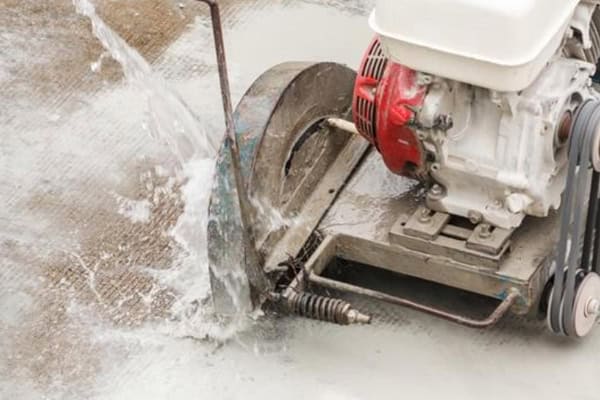
Have you ever found yourself staring at a Diamond Blade and wondered, "Why is it called a Diamond Blade?" Well, you’re not alone. I remember the first time I encountered one during a home renovation project, and the name itself piqued my curiosity. Today, let’s embark on a journey to uncover the story behind this fascinating tool and explore its myriad applications and benefits.
A Diamond Blade earns its name from its core component—diamonds. These blades incorporate diamond segments, which provide unparalleled hardness and durability, allowing them to effortlessly slice through some of the toughest materials known to man. Whether you’re on a bustling construction site or tackling a DIY project at home, a Diamond Blade stands out as an indispensable tool that combines strength with precision.
But there’s so much more to a Diamond Blade than meets the eye. Let’s delve deeper into its intricacies and understand why it’s a favorite among professionals and hobbyists alike.
Why Choosing the Right Diamond Blade Matters
Ever stood in a store aisle, overwhelmed by the variety of Diamond Blades, wondering which one to pick? Trust me, I’ve been there too. The right blade can make a world of difference in your cutting experience, ensuring both efficiency and quality.
Selecting the right Diamond Blade is essential for achieving clean, precise cuts while prolonging the blade’s lifespan. By understanding the blade’s material composition and its intended use, you can make informed decisions that enhance your projects and save you time and money in the long run.
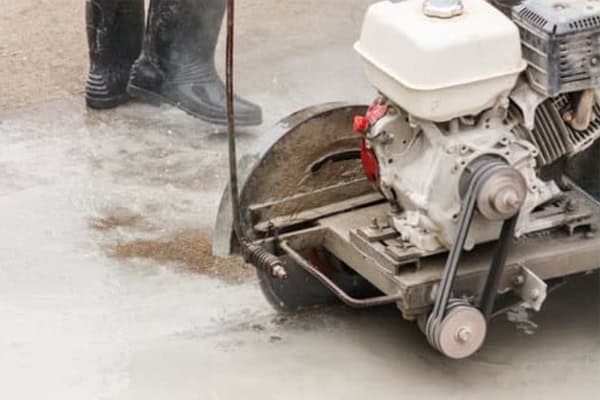
Let’s break down the factors that should influence your choice when selecting a Diamond Blade.
The Material Advantages of Diamond Blades
Diamond Blades are engineered from high-purity ceramics embedded with diamond particles, which imbue them with exceptional hardness and wear resistance. This makes them ideal for cutting through dense and tough materials without compromising on precision or efficiency.
Durability and Longevity
One of the standout features of Diamond Blades is their durability1. Unlike traditional blades that can dull quickly, Diamond Blades maintain their sharpness for extended periods. This means fewer replacements and more consistent performance, which is particularly beneficial for large-scale projects.
Precision Cutting
The hardness of Diamond Blades allows for incredibly precise cuts. This is especially important in applications where accuracy is paramount, such as intricate tile work or detailed masonry. The ability to make clean, straight cuts without chipping or cracking the material ensures a professional finish every time.
Reduced Maintenance
Diamond Blades require less maintenance compared to their metal counterparts. Their resistance to wear and tear means they don’t need frequent sharpening or realignment, freeing you up to focus on the task at hand rather than blade upkeep.
Real-World Applications
Imagine you’re renovating your kitchen and need to install new porcelain tiles. A high-quality Diamond Blade can effortlessly slice through thick tiles, ensuring each cut is clean and precise. This not only saves time but also minimizes waste, as you’re less likely to damage or waste materials due to imperfect cuts.
| Característica | Lâmina de diamante | Traditional Blade |
|---|---|---|
| Dureza | Extremely high | Moderate |
| Resistência ao desgaste | Excellent | Average |
| Cutting Precision | High | Médio |
| Longevidade | De longa duração | Shorter lifespan |
| Maintenance Required | Low | High |
| Ideal Applications | Precision tasks, intricate cuts | General cutting tasks |
Are Porcelain Slabs Easy to Cut?
Cutting porcelain slabs might seem like a daunting task, especially if you’re new to DIY projects or haven’t worked with such materials before. However, with the right tools and techniques, it can be surprisingly manageable and even enjoyable.
Porcelain slabs are relatively easy to cut when equipped with the appropriate Diamond Blade and technique. Proper tools and methods can significantly enhance the efficiency and quality of your cuts, making the process smoother and more precise.
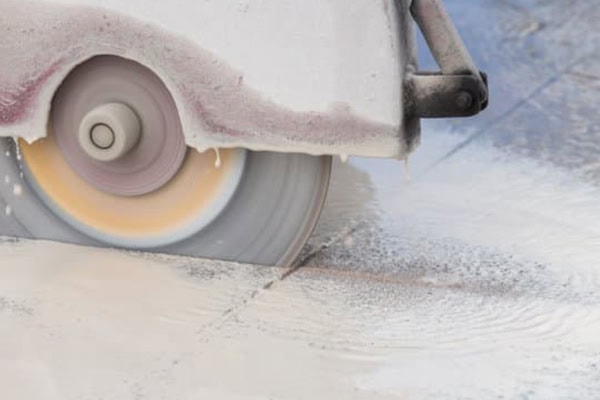
Here’s a comprehensive guide to mastering the art of cutting porcelain slabs effectively.
Selecting the Right Blade and Tools
The foundation of any successful cutting project lies in choosing the right Diamond Blade and tools. For porcelain slabs2, a Diamond Blade is indispensable due to its superior hardness and precision. Additionally, investing in a high-quality wet saw can make a significant difference in the ease and quality of your cuts.
Types of Diamond Blades
- Segmented Diamond Blades: These blades have gaps between the diamond segments, allowing for better cooling and reduced heat buildup. They’re ideal for cutting through thick porcelain slabs.
- Continuous Rim Diamond Blades: Featuring a smooth, uninterrupted edge, these blades are perfect for making clean, precise cuts without chipping the material.
- Turbo Diamond Blades: Designed for faster cutting, turbo blades are suitable for projects that require quick, efficient cuts without compromising on quality.
Essential Tools
- Wet Saw: A wet saw not only ensures a smoother cut but also helps in cooling the blade, prolonging its lifespan and preventing material cracking.
- Protective Gear: Safety first! Equip yourself with gloves, safety goggles, and a dust mask to protect against potential hazards.
- Measuring Tools: Accurate measurements are crucial. A reliable measuring tape and a straightedge will help you mark precise cut lines.
- Clamps: Secure your porcelain slab firmly in place using clamps to prevent movement during cutting, ensuring a straight and clean cut.
Personal Experience
I remember my first attempt at cutting porcelain slabs. Equipped with a basic saw, the results were less than satisfactory—chipped edges and uneven cuts plagued my project. It wasn’t until I upgraded to a high-quality Diamond Blade and invested in a wet saw that I truly appreciated the ease and precision these tools offered. The transformation in my work quality was astounding, turning what once seemed like a Herculean task into a manageable and even enjoyable process.
Step-by-Step Cutting Process
- Preparation: Begin by measuring and marking your cut lines accurately. Use a pencil or a marker to ensure visibility.
- Set Up the Saw: Install the appropriate Diamond Blade on your wet saw, ensuring it’s securely fastened. Adjust the blade depth to slightly exceed the thickness of your porcelain slab.
- Secure the Slab: Place the porcelain slab on the saw table and use clamps to hold it firmly in place. This stability is crucial for making straight, precise cuts.
- Cutting Technique: Start the saw and gently guide the slab along the marked line, applying even pressure. Let the saw do the work—avoid forcing the blade through the material.
- Resfriamento: Maintain a steady flow of water to keep the blade cool and reduce dust generation. This not only enhances the cut quality but also prolongs the blade’s life.
- Finishing Touches: Once the cut is complete, use a fine-grit sandpaper or a tile file to smooth any rough edges, ensuring a polished finish.
Troubleshooting Common Issues
- Chipping: If you notice chipping along the edges, it may be due to using a dull blade or applying too much pressure. Ensure your blade is sharp and let the saw do the work.
- Uneven Cuts: Uneven cuts can result from improper slab alignment or unstable clamping. Double-check the alignment and secure the slab firmly before cutting.
- Superaquecimento: An overheating blade is a sign of inadequate cooling. Verify that the water supply is consistent and that the blade is suitable for wet cutting.
| Step | Descrição | Tips |
|---|---|---|
| Preparation | Measure and mark cut lines accurately | Use a straightedge for precision |
| Set Up the Saw | Install the correct Diamond Blade and adjust depth | Ensure blade is securely fastened |
| Secure the Slab | Use clamps to hold the slab firmly in place | Double-check stability before cutting |
| Cutting Technique | Guide the slab along the marked line gently | Maintain a steady pace, avoid forcing |
| Resfriamento | Keep a consistent flow of water to the blade | Prevents overheating and prolongs blade life |
| Finishing Touches | Smooth rough edges with sandpaper or a tile file | Achieves a polished, professional finish |
Can You Use a Diamond Blade without Water?
In the midst of a project, there might be moments when accessing water is challenging. This raises the question: Can you still use a Diamond Blade effectively without water? Let’s explore the implications and best practices for such scenarios.
While Diamond Blades can operate without water, using water significantly improves cutting performance and blade longevity by reducing heat and dust. However, there are situations where water might not be available, and understanding how to adapt is key to maintaining efficiency and safety.
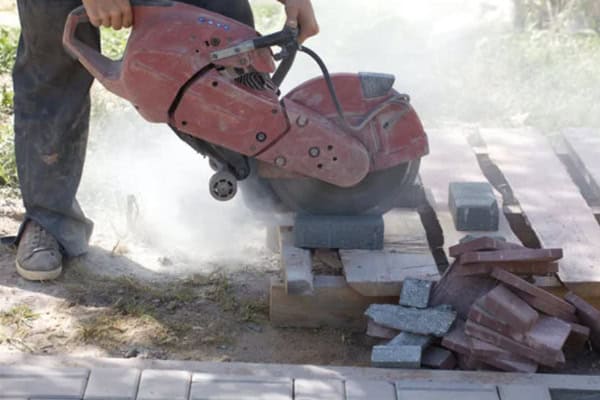
Here’s a comprehensive look at the differences between dry and wet cutting and how to manage each method effectively.
The Difference Between Dry and Wet Cutting
Dry cutting involves using the Diamond Blade without any coolant, relying solely on the blade’s ability to cut through material with its inherent hardness. Wet cutting, on the other hand, incorporates water3 to cool the blade and the material being cut, providing several benefits.
Advantages of Wet Cutting
- Blade Cooling: Water effectively dissipates heat generated during the cutting process, preventing the blade from overheating.
- Dust Reduction: The water acts as a suppressant, minimizing dust generation and creating a cleaner work environment.
- Enhanced Cut Quality: Wet cutting results in smoother, more precise cuts with fewer imperfections like chips or cracks.
Challenges of Dry Cutting
- Superaquecimento: Without water, the blade can quickly overheat, leading to reduced cutting efficiency and potential blade damage.
- Increased Dust: Dry cutting generates significant dust, which can be a health hazard and require additional cleanup.
- Safety Risks: Excessive heat and dust can create hazardous working conditions, increasing the risk of accidents and health issues.
Personal Insight
During one particularly humid summer, I found myself in a situation where water was scarce while cutting through a particularly stubborn porcelain slab. Initially, I was frustrated by the lack of cooling, but this challenge pushed me to refine my technique. I learned to make slower, more deliberate cuts, allowing the blade to cool naturally between passes. While not ideal, this approach helped me complete the project without compromising too much on quality or safety.
Best Practices for Dry Cutting
If you find yourself needing to use a Diamond Blade without water, here are some strategies to mitigate the drawbacks:
- Use High-Quality Blades: Invest in Diamond Blades designed for dry cutting. These blades are engineered to withstand higher temperatures and reduce the risk of overheating.
- Optimize Cutting Speed: Slow down your cutting speed to minimize heat buildup. Allow the blade to make smooth, steady progress without forcing it through the material.
- Pause Regularly: Take frequent breaks to let the blade cool down. This reduces the risk of overheating and extends the blade’s lifespan.
- Ensure Proper Ventilation: Use fans or open windows to disperse dust and maintain airflow, improving visibility and reducing health risks.
- Use Dust Collection Systems: Implement dust extraction equipment to capture airborne particles, creating a safer and cleaner workspace.
Alternative Cooling Methods
In the absence of a water source, you can explore alternative cooling techniques to keep the blade from overheating:
- Air Cooling: Utilize compressed air to blow away dust and cool the blade during cutting.
- Cooling Sprays: Apply cooling sprays designed for cutting tools to help manage temperature.
- Blade Lubricants: Some blade lubricants can provide temporary cooling benefits, though they may not be as effective as water.
| Método de corte | Vantagens | Desvantagens |
|---|---|---|
| Corte a Seco | Quick and convenient | Blade overheating, more dust |
| Wet Cutting | Better cooling, cleaner cuts | Requires a water source, more setup |
| Air Cooling | Reduces dust, no need for water | Less effective than water cooling |
| Cooling Sprays | Temporary cooling benefits | May require frequent application |
Can a Diamond Blade Cut Skin?
Safety is paramount when working with powerful tools like Diamond Blades. You might find yourself pondering, "Can a Diamond Blade cut skin?" It’s a valid concern, especially if you’re new to using such tools or working in environments where safety protocols might be lax.
Diamond Blades are extremely sharp and designed to cut through hard materials. If mishandled or used carelessly, they can indeed cause severe injuries, including cutting skin. Therefore, adhering to strict safety measures is essential to prevent accidents and ensure a safe working environment.
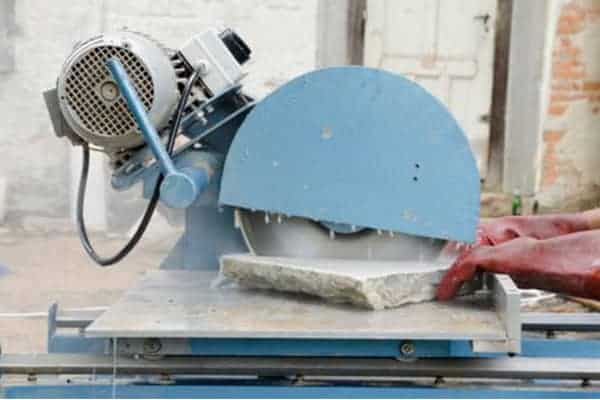
Let’s discuss the best practices and safety guidelines to keep you and those around you safe while using Diamond Blades.
Safety Guidelines for Using Diamond Blades
-
Wear Protective Gear: Always don appropriate safety equipment. This includes:
- Gloves: Protect your hands from sharp edges and accidental contact.
- Safety Goggles: Shield your eyes from flying debris and dust.
- Dust Masks: Prevent inhalation of harmful particles, especially during dry cutting.
- Protective Clothing: Long sleeves and sturdy footwear can provide additional protection against accidental cuts and debris.
-
Stay Focused and Alert: Concentration is key when operating Diamond Blades. Avoid distractions and stay attentive to the task to prevent mistakes that could lead to accidents.
-
Secure the Material: Ensure that the material you’re cutting is firmly secured. Unstable materials can shift unexpectedly, leading to uneven cuts or unintended contact with the blade.
-
Follow Manufacturer’s Instructions: Each Diamond Blade and cutting tool comes with specific usage guidelines. Familiarize yourself with these instructions to operate the tool safely and effectively.
-
Regular Maintenance: Keep your tools in good condition. Regularly inspect the Diamond Blade for signs of wear or damage and replace it as needed to maintain optimal performance and safety.
Personal Anecdote
I vividly recall an incident early in my DIY journey. While cutting a porcelain slab, I wasn’t wearing my safety goggles, and a small chip flew towards my face. Thankfully, it only grazed my cheek, but the scare was enough to reinforce the importance of always wearing protective gear. Since then, I’ve made it a non-negotiable habit to equip myself fully before starting any cutting task.
Emergency Preparedness
Despite taking all precautions, accidents can still happen. Being prepared can make a significant difference in mitigating the impact of an unexpected injury.
- First Aid Kit: Keep a well-stocked first aid kit nearby, including bandages, antiseptics, and other essentials to treat minor injuries promptly.
- Emergency Contacts: Have a list of emergency contact numbers readily accessible, including local medical facilities and poison control centers.
- Training: Consider taking a basic first aid course to better handle emergencies should they arise.
Creating a Safe Workspace
A safe working environment is the foundation of accident prevention. Here’s how you can create one:
- Clear the Area: Remove any unnecessary clutter that could cause tripping or interfere with your cutting work.
- Proper Lighting: Ensure that your workspace is well-lit to enhance visibility and reduce the risk of accidents.
- Ventilation: Good airflow helps in reducing dust accumulation and maintaining a comfortable working temperature, especially during dry cutting.
| Safety Measure | Descrição | Importance |
|---|---|---|
| Protective Gear | Gloves, goggles, masks, and appropriate clothing | Prevents injuries from accidental contact |
| Focused Operation | Stay attentive and avoid distractions | Reduces the likelihood of mistakes |
| Material Stability | Secure materials firmly in place | Prevents unexpected shifts and accidents |
| Tool Maintenance | Regularly inspect and maintain tools | Ensures tools are in safe, working condition |
Deep Dive: Understanding the Composition of Diamond Blades
To truly appreciate why Diamond Blades are so effective, it’s essential to understand their composition and how each component contributes to their performance.
Diamond Blades are not solid diamonds; rather, they are composite tools that incorporate diamond particles into a metal matrix. This unique combination results in a blade that harnesses the hardness of diamonds while maintaining the flexibility and durability needed for practical cutting applications.
The Role of Diamond Particles
Diamonds are the hardest known industry diamond, making them ideal for cutting through other hard substances. In Diamond Blades, diamond particles are embedded onto the edge of the blade or into segments of the blade4.
Types of Diamond Blades
- Lâminas segmentadas: These blades have spaces between the diamond segments, allowing for better cooling and debris removal. They’re ideal for heavy-duty cutting tasks.
- Lâminas de Aro Contínuo: Featuring a smooth, uninterrupted edge, these blades are perfect for making precise, clean cuts without chipping.
- Turbo Blades: Combining aspects of segmented and continuous rim blades, turbo blades offer faster cutting speeds with a balance between cooling and cut quality.
The Metal Matrix
The metal matrix binds the diamond particles to the blade, providing structural integrity and flexibility. Common metals used include steel or aluminum, chosen for their durability and ability to withstand the stresses of cutting.
Benefits of the Metal Matrix
- Durabilidade: The metal matrix ensures that the diamond particles remain securely attached, even under intense cutting conditions.
- Flexibilidade: Allows the blade to withstand vibrations and minor impacts without cracking or breaking.
- Heat Resistance: Helps in dissipating heat generated during cutting, protecting both the blade and the material being cut.
Innovations in Diamond Blade Technology
The evolution of Diamond Blades has been marked by continuous innovations aimed at enhancing performance and extending lifespan. Recent advancements include:
- Enhanced Cooling Systems: Improved designs that facilitate better water flow and heat dissipation, reducing the risk of overheating.
- Advanced Segmentation Patterns: Optimized segment layouts that balance cutting speed and cooling efficiency, providing superior performance across various materials.
- Reinforced Metal Matrices: Use of high-strength metals to increase blade durability and resistance to wear and tear.
| Component | Descrição | Contribution to Performance |
|---|---|---|
| Diamond Particles | Embedded diamonds on blade edge or segments | Provides exceptional hardness for cutting |
| Metal Matrix | Binds diamond particles to the blade | Ensures structural integrity and flexibility |
| Tipo de Título | Soft, metal, or hybrid bonds | Determines cutting speed and blade lifespan |
| Cooling Systems | Enhanced designs for water flow | Prevents overheating and extends blade life |
| Segmentation | Optimized segment patterns | Balances cutting speed and cooling efficiency |
Enhancing Efficiency with Diamond Blades: Tips and Tricks
Maximizing the efficiency of your Diamond Blade involves more than just selecting the right blade. It’s about adopting best practices and techniques that ensure optimal performance and longevity.
Efficiency with Diamond Blades is achieved through a combination of proper tool selection, maintenance, and cutting techniques. By implementing these strategies, you can enhance the quality of your work while minimizing downtime and costs associated with blade wear and replacements.
Proper Blade Selection
Choosing the right Diamond Blade for your specific application is the first step toward efficient cutting. Consider the following factors:
- Material Being Cut: Different blades are designed for various materials. Ensure that the blade you select is suitable for the material you intend to cut.
- Blade Size and Type: The size of the blade should match the requirements of your project. Larger blades are typically used for thicker materials, while smaller blades are suitable for finer, more detailed cuts.
Matching Blade to Material
- Ceramic Tiles: Use a continuous rim Diamond Blade for clean, precise cuts without chipping.
- Concreto e Alvenaria: Opt for a segmented Diamond Blade for faster cutting through tough materials.
- Glass and Stone: Turbo Diamond Blades offer a balance between speed and precision, making them ideal for cutting glass and natural stone.
Maintenance and Care
Regular maintenance is crucial for ensuring that your Diamond Blade performs optimally and lasts longer.
Cleaning the Blade
After each use, clean the blade to remove any residue or debris. This prevents build-up that can hinder performance and cause uneven wear.
Inspecting for Damage
Regularly inspect the blade for signs of damage, such as cracks or excessive wear on the diamond segments. Replace the blade if any damage is detected to maintain cutting efficiency and safety5.
Proper Storage
Store your Diamond Blades in a dry, clean environment to prevent rust and corrosion. Use blade guards or protective covers to shield the blade from dust and physical damage when not in use.
Personal Experience
In one of my projects, I neglected to clean the Diamond Blade after a particularly messy cut through a concrete slab. Over time, the residue built up, causing the blade to perform poorly and cut unevenly. A simple cleaning session restored its performance, highlighting the importance of regular maintenance.
Optimizing Cutting Techniques
Adopting the right cutting techniques can significantly improve both the quality of your cuts and the lifespan of your Diamond Blade.
- Steady Hand Movement: Maintain a smooth, consistent motion while cutting to prevent the blade from wobbling or veering off course.
- Avoid Excessive Pressure: Let the blade do the work. Applying too much pressure can cause the blade to overheat and wear out faster.
- Use Guide Rails: For straight cuts, guide rails can help keep the blade aligned, ensuring precision and reducing the risk of errors.
- Mind the Speed: Adjust the cutting speed based on the material and blade type. Slower speeds may be necessary for harder materials to prevent overheating.
Leveraging Technology
Modern Diamond Blades come equipped with features that enhance their efficiency and ease of use. Familiarize yourself with these technologies to make the most out of your tools.
Smart Cutting Systems
Some Diamond Blades are integrated with smart cutting systems that monitor blade performance and provide real-time feedback. These systems can alert you to issues like overheating or excessive wear, allowing you to address them promptly.
Automated Cutting Machines
Automated cutting machines equipped with Diamond Blades offer precision and speed that manual cutting can’t match. These machines are ideal for large-scale projects where consistency and efficiency are paramount.
| Efficiency Strategy | Descrição | Benefícios |
|---|---|---|
| Proper Blade Selection | Choose the right blade for the material and project | Enhances cutting quality and speed |
| Regular Maintenance | Clean, inspect, and store blades properly | Extends blade lifespan and maintains performance |
| Optimized Cutting Techniques | Adopt smooth, steady motions and avoid excessive pressure | Improves cut quality and reduces wear |
| Leveraging Technology | Utilize smart cutting systems and automated machines | Increases precision and efficiency |
Exploring the Versatility of Diamond Blades
Diamond Blades are celebrated for their versatility, capable of handling a wide array of materials and applications. Let’s explore the various ways these blades can be utilized beyond traditional cutting tasks.
The versatility of Diamond Blades stems from their ability to cut through a diverse range of materials with ease and precision. From construction and renovation to artistic endeavors, these blades are indispensable in numerous fields, showcasing their adaptability and efficiency.
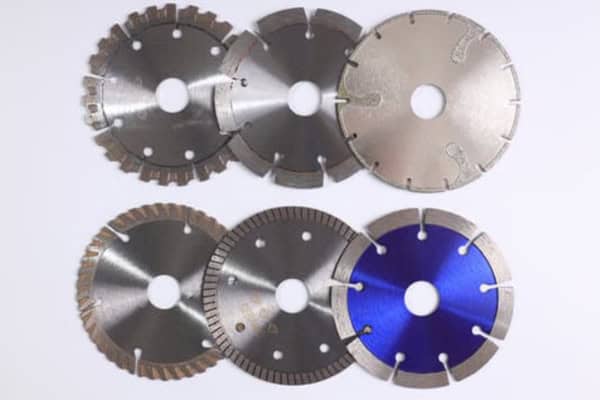
Applications in Construction
In the construction industry, Diamond Blades are invaluable tools used for cutting concrete, asphalt, and stone. Their robustness and precision make them ideal for tasks that require both speed and accuracy.
Cutting Concrete and Asphalt
Diamond Blades excel at slicing through tough materials like concrete and asphalt, facilitating tasks such as road repairs, foundation work6, and utility installations. Their ability to make clean cuts reduces the need for extensive finishing work, saving both time and labor.
Real-World Example
During a recent road resurfacing project, the Diamond Blades allowed our team to efficiently cut through the existing asphalt, creating precise channels for new utility lines. The speed and accuracy of the blades minimized project downtime and improved overall efficiency.
Stone Masonry
For stone masonry, Diamond Blades provide the precision needed to craft intricate designs and ensure seamless joins. This is particularly important in decorative stonework, where aesthetic quality is as important as structural integrity.
Tile Installation
When installing tiles, especially large porcelain or natural stone tiles, a Diamond Blade ensures that each cut is accurate, preventing chipping and ensuring that tiles fit perfectly into designated spaces.
Personal Anecdote
I once undertook a bathroom renovation where precise tile cuts were essential for fitting around fixtures and edges. Using a Diamond Blade made the process smooth, resulting in a flawless tile layout that elevated the entire space’s aesthetic appeal.
Ceramic and Composite Materials
Industries that work with ceramics and composite materials benefit from Diamond Blades’ ability to make clean, accurate cuts, reducing material waste and enhancing product quality.
| Application Area | Specific Use Cases | Benefícios |
|---|---|---|
| Construction | Cutting concrete, asphalt, and stone masonry | Speed, precision, and durability |
| Renovation and Remodeling | Tile installation, ceramic cutting | Clean cuts, professional finishes |
The Evolution of Diamond Blades: A Historical Perspective
Understanding the evolution of Diamond Blades provides insight into their current design and functionality, highlighting the technological advancements that have made them the tools we rely on today.
The journey of Diamond Blades from their inception to their modern-day designs is a testament to human ingenuity and the relentless pursuit of efficiency and precision. By exploring their historical development, we can appreciate the innovations that have shaped their current capabilities and applications.
Introduction of Segmented Blades
One significant advancement was the introduction of segmented Diamond Blades. By incorporating gaps between diamond segments, manufacturers improved cooling and debris removal, enhancing cutting performance and blade lifespan.
Continuous Rim Technology
The development of continuous rim Diamond Blades marked another milestone. These blades featured an uninterrupted edge, allowing for smoother and more precise cuts, particularly beneficial for materials requiring clean finishes like porcelain tiles7 and glass.
Conclusão
Diamond Blades are more than just cutting tools; they are marvels of engineering and material science that offer unparalleled performance and versatility. By understanding their composition, applications, and best practices for usage and maintenance, you can harness their full potential to achieve precise and efficient cutting in a variety of projects.
-
How diamond blades are designed to withstand wear and tear better than standard blades, which is crucial for performance and cost-effectiveness in long-term use. ↩
-
This provides further details on why special tools like diamond blades are necessary for these materials and explains their unique properties that make cutting them challenging. ↩
-
Give users insights into the benefits of using water during cutting processes, such as cooling, reducing dust, and improving cut quality. ↩
-
Segmented blades have advantages like heat dissipation and increased cutting efficiency, segmentation affects the overall performance and durability of diamond blades. ↩
-
Ensure users understand the importance of maintaining their tools in safe working conditions and preventing accidents or injuries related to faulty equipment. ↩
-
Foundation work involves cutting through various materials, including concrete, how diamond blades facilitate clean, quick cuts in foundation projects, reducing the need for post-cutting cleanup. ↩
-
How continuous rim diamond blades can ensure clean, precise cuts, minimizing damage to these delicate materials. ↩